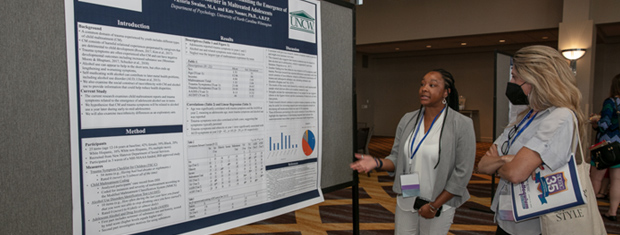




The APSAC Advisor is a peer reviewed quarterly news journal for professionals in the field of child abuse and neglect.
The APSAC Advisor provides succinct, data-based, practice-oriented articles that keep interdisciplinary professionals
informed of the latest developments in policy and practice the field of child maltreatment. It is designed to highlight
best practices in the field and publish original articles and current information about child maltreatment for professionals
from a variety of backgrounds including medicine, law, law enforcement, social work, child protective services, psychology,
public health and prevention in the U.S.
 If you wish to learn more about submitting an article to the Advisor, please click here.
If you wish to learn more about submitting an article to the Advisor, please click here.
This library contains Advisor issues dating back to the first issue in 1988. The most recent issue appears at the top.
Scroll down to select past issues by year and issue number. Once a publication appears in the box, you
can use the Enlarge button to open the document in a new window or tab (depending on how your browser is set up).
This will allow you to view the document with larger print.
To print a document, first use the Enlarge button to open the document in a new window or tab. Then use your browser's Print command.
To return here from a new tab, close the tab. To return from a new window, click your browser's Back button.
In the listing below, click on a year and issue number to see the articles in that publication.
2014 Number 2
Child maltreatment continues to impact the Alaska Native population disproportionally relative to the Alaska non-Native population. The author uses five publicly available data sources to provide a descriptive assessment of Alaska Native children’s experiences with known risk factors and reported maltreatment. He concludes that, due to the large geographical size and limited mental health and substance abuse services in rural Alaska, innovative prevention efforts are needed, and that a focus should be on integrating cultural practices and increasing protective factors rather than limited short-term interventions aimed at preventing maltreatment only.
The devastating impact of educational policies directed at Native American children can still be felt within Native communities, and current mainstream educational policies may still directly challenge tribal identification and traditional values for Native students. The author provides a historical overview of these policies and their effects and then discusses steps to be taken to provide culturally responsive teaching using cultural knowledge, prior experiences, and performance styles of diverse students to make learning more appropriate and effective. She concludes that Native educators must continue to share in a personal and public discourse that encourages preservation of Indigenous knowledge, embraces diversity of thought, and restores balance for Native people.
Cultural Enhancement of Mental Health Services for American Indian Children
Within the field of children’s mental health, there has been a distinct move to create transportability of evidence-based treatments. The authors report on a program of cultural enhancements and increased adaptation of services provided for American Indian and Alaska Native populations, and specifically for American Indian children. The Honoring Children Series was developed with input from a variety of cultural consultants, and the authors review its use with parent-child interaction therapy, trauma-focused cognitive behavioral therapy, and treatment for children with problematic sexual behaviors.
Suicide Prevention: A Culture-Based Approach in Indian Country
American Indian and Alaskan Native death rates are nearly 50% greater than those of non-Hispanic whites, and for these youth, suicide fatalities and their risk factors, including substance abuse, violence and bullying, coping with trauma, and depression, have reached a crisis point. The author reviews two programs: Native HOPE is a suicide prevention and peer-counseling curriculum that addresses suicide prevention, violence prevention, coping with stress and trauma, and depression for teens. Good Road of Life: Responsible Fatherhood addresses challenges in wellness and recovery for American Indian and Alaskan Native men. Both programs focus on strengths, culture, humor, spirituality, and participation of these vulnerable populations.
APSAC Advisor 26(2): Full Issue